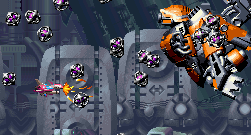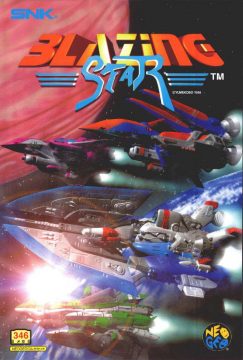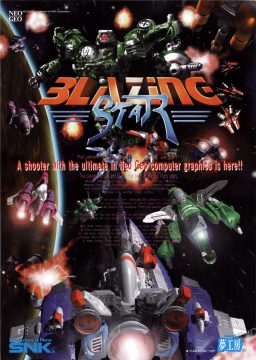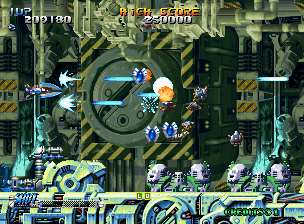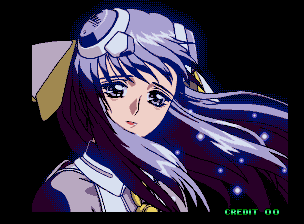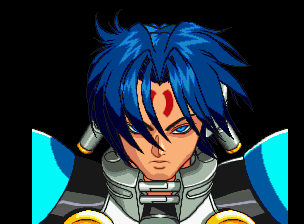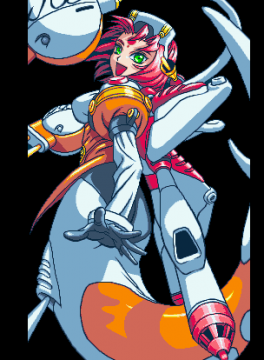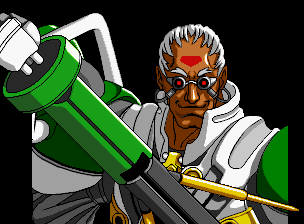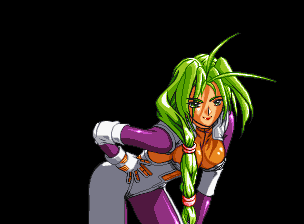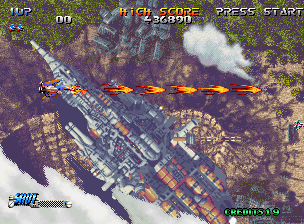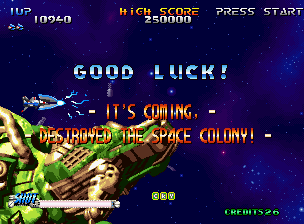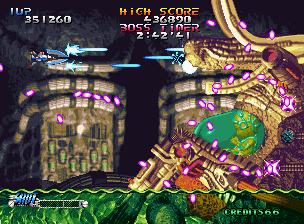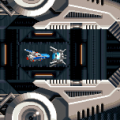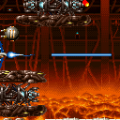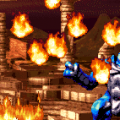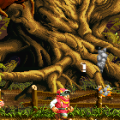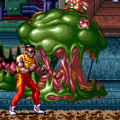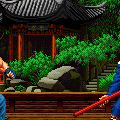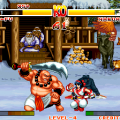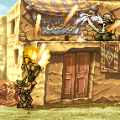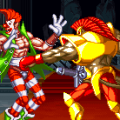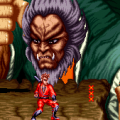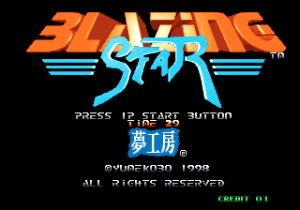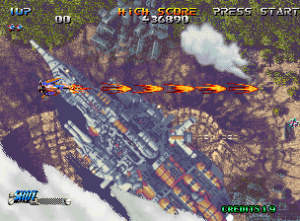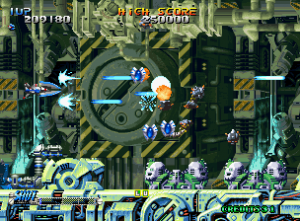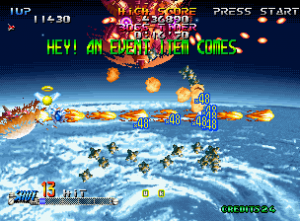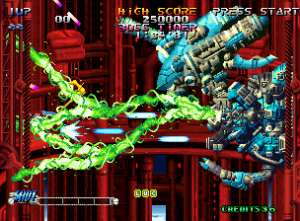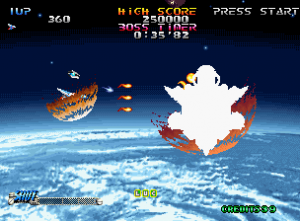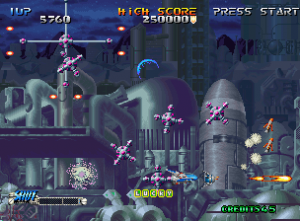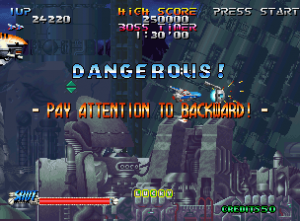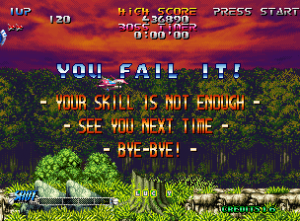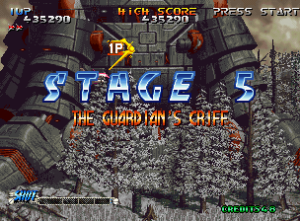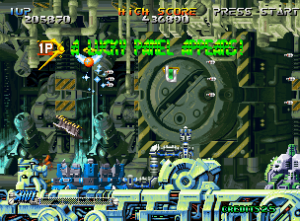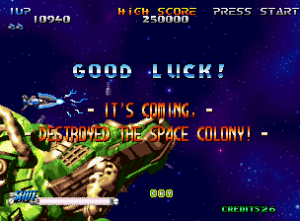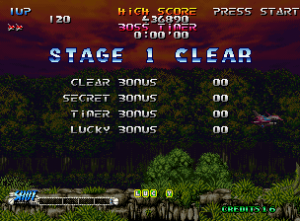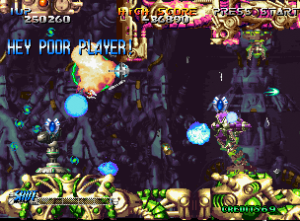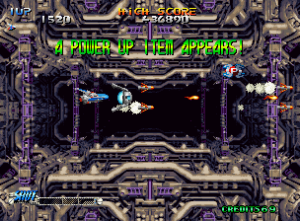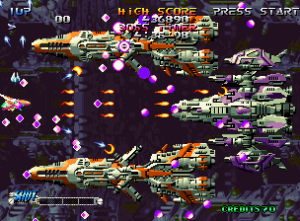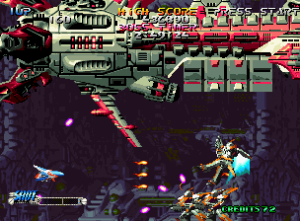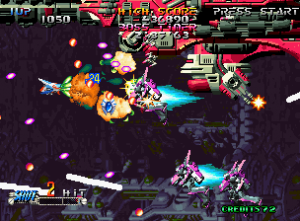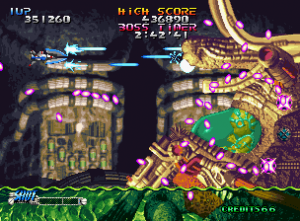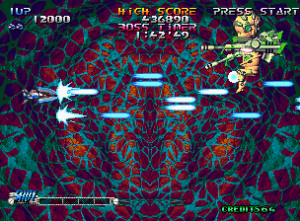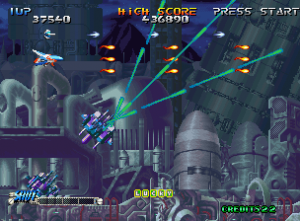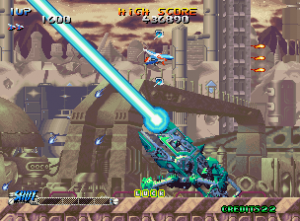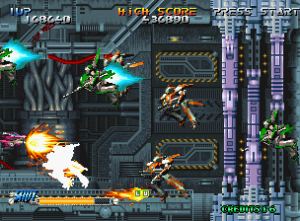Blazing Star is the first game developed by Yumekobo, though Yumekobo has actually been around since the late 80s. They’re actually the same developer as Aicom, with a new name only to mark their new direction of working almost exclusively with SNK. Their last game as Aicom, Pulstar, and their debut as Yumekobo make great bookends, with both being outstanding shooters. While Pulstar does borrow liberally from the R-Type series, however, Blazing Star is a much more original creation. The influence of previous classic shooters is there, but Blazing Star delivers enough action and cool scenery to stand on its own.
What makes it really stand out is how bright and colorful it is while still being built around the darker themes and designs found in older Neo Geo games like Last Resort. The game’s setup is a bit more involved than the average shoot-em-up, though unfortunately none of this story is actually present in the game itself. The only source of information for the why the player gets to choose one of six characters to blast through hordes of enemies with is in the game’s Japanese Neo Geo AES manual. Fortunately, Shmuplations has produced a great translation of it that offers some insight into the game’s action and design.
Blazing Star began life as a direct sequel to Pulstar (initially called Pulstar Blast), but after that game was released to a mixed reception due to its high difficulty and lack of originality, Yumekobo and SNK decided to give it a name and look that would distance it a bit from Pulstar‘s reputation. It’s still in the same setting, however, with some returning characters and content. The game’s action will also be immediately familiar to Pulstar fans. Players can press the A button to fire at enemies, press it very rapidly to produce a different effect, or hold it down for a while to charge up a powerful blast. Pressing the B button while letting that charged up shot loose will cause it to “detonate” early, producing different effects depending on which ship the player chooses. There are also a few items players can pick up to improve their weapons and also increase their score. Taking down multiple enemies with a single charged blast will grant higher scores, while spelling out the word “LUCKY” from collected letters will also grant a bonus at the stage end. Otherwise, the biggest change from Pulstar is the instant resurrection after death, making Blazing Star much faster paced.
The story revolves around two warring planets, Lemuria and Mutras. The latter is a red planet that was originally a colony of Lemuria, while Lemuria is described as a blue planet. Both planets’ governments develop aggressive artificial intelligences to construct and control cybernetic armies to fight for them. One of these AIs (called Brawshella in the game) quickly entices some of its planet’s inhabitants to give up their identities completely and become even more powerful cybernetic warriors in this ongoing conflict. Unfortunately, it works so well that every living person on both planets is forced into this program. After years of conflict, four of these people “wake up,” remembering their humanity as they join together to destroy this endlessly productive living weapons factory.
It’s a bleak premise, implying years of literally mindless war destroying both worlds only because of a single computer program operating as intended (and this was before The Matrix was released). The design of that evil computer is unusual as well. It takes the form of a giant sized infant perpetually dreaming of different weaponry and warriors, and the rest of the womb-like facility grows and constructs its military hardware based on this synthetic child’s imagination. It also makes for an incredible final boss fight, as the child takes several different forms and has a huge variety of attacks players have to watch out for. Despite all of this, however, Blazing Star‘s tone is surprisingly cheerful and hopeful, as reflected in the character designs of the four awakened soldiers.
The Cast and Ships of Blazing Star
Pilot: Asayuki
Ship: Peplos
Asayuki’s design is actually much older than Blazing Star itself. According to a Neo Geo Freak magazine interview from 1998, Daikichi originally created her for an upcoming game that was cancelled years prior. Her design ended up having a huge influence on Blazing Star, as one can see how her metallic wings became the basis for the cybernetically modified cast and much of the game’s backstory.
 Her ship will seem overly powerful at first. It has both high speed and some impressive firepower. Its drawback will quickly become apparent though, the ship’s weapons cannot be powered up. What it starts with is all the player has to work with for the entire game. Experts can exploit its charge attacks to score big points.
Her ship will seem overly powerful at first. It has both high speed and some impressive firepower. Its drawback will quickly become apparent though, the ship’s weapons cannot be powered up. What it starts with is all the player has to work with for the entire game. Experts can exploit its charge attacks to score big points.
Pilot: Caster Mild
Ship: Hell-Hound
The least visually interesting member of the game’s four awakened heroes. He gave himself over willingly to Brawshella in hopes that drastically altering his body would turn him into an unstoppable warrior. Now he’s attemping to destroy Brawshella itself only so that people will see him as the most powerful guy in town. His backstory is a bit more complicated, however. Caster grew up in a massive slum built twenty-four stories under the Earth’s surface. It doesn’t play into the game’s story but he also has the ability to read people’s minds and know their memories with a touch. We’d see similar abilities given to Javik and the rest of his people in Mass Effect 3.
 Caster’s ship is a bit boring, with average stats all around. Though its many flame based attacks make for a nice joke given the character’s last name.
Caster’s ship is a bit boring, with average stats all around. Though its many flame based attacks make for a nice joke given the character’s last name.
Pilot: Feena Chao
Ship: Windina
Feena’s carefree manner and mermaid-like form is a sham, she’s actually the most bloodthirsty of the game’s characters. She is the daughter of the “President of the Corporation” responsible for most of the arms manufacturing on Remuria. Interestingly, according to Neo Geo Freak she was modelled after Yuko Asahina from Tokimeki Memorial.
 The Windia is one of the easier ships to use in the game, and a great choice for beginners. Its attacks may seem weak at first, but the sheer quantity of projectiles she can cover the screen with means new players can focus more on avoiding enemy fire. Her charge attack is also very useful against the game’s larger enemies as it fires out a series of energy blasts that will create a long lasting explosion on impact with any enemies.
The Windia is one of the easier ships to use in the game, and a great choice for beginners. Its attacks may seem weak at first, but the sheer quantity of projectiles she can cover the screen with means new players can focus more on avoiding enemy fire. Her charge attack is also very useful against the game’s larger enemies as it fires out a series of energy blasts that will create a long lasting explosion on impact with any enemies.
Pilot: JB (Jean Bismarck)
Ship: Aryustailm
JB is a huge cyborg with massively enhanced arms. While his appearance may be imposing (Daikichi was obviously a fan of Batou from Ghost in the Shell), he’s actually the friendliest of the four awakened characters. He was ordered into submitting to Brawshella’s conversion program but can’t wait to free and return to his family.
 JB might be a friendly guy, but Aryustailm is the meanest ship in the game. What it lacks in speed and gimmicks it makes up for with an extremely powerful laser weapon. It’s charge attack is an deadly short range blast. It’s another good ship to try to max out one’s score with due to the effectiveness of its attacks.
JB might be a friendly guy, but Aryustailm is the meanest ship in the game. What it lacks in speed and gimmicks it makes up for with an extremely powerful laser weapon. It’s charge attack is an deadly short range blast. It’s another good ship to try to max out one’s score with due to the effectiveness of its attacks.
Pilot: Kaoru Yamazaki
Ship: Dino 246
The heroine who saved humanity in Pulstar returns! Kaoru gets caught up in the game’s conflict when her sister goes missing. After leading a fleet to stop a new vanguard of the alien forces that were defeated in Pulstar, she quickly departs to follow the signal of her sister’s ship.
 Pulstar fans will feel right at home piloting the Dino 246 with its drones and force pod. The extra protection from enemy attacks and slow speed make it the ideal choice for those who want to go through the game defensively.
Pulstar fans will feel right at home piloting the Dino 246 with its drones and force pod. The extra protection from enemy attacks and slow speed make it the ideal choice for those who want to go through the game defensively.
Pilot: Naomi Yamazaki
Ship: Dino 135
Kaoru’s older sister is an ace pilot in her own right. She lands on Lemuria, mistaking it for Earth (understandable since Lemuria and Mutras seem like stand ins for Earth and Mars) after being blown far off course by a planetary explosion of her own doing.
 Naomi’s Dino 135 is probably the most challenging ship to get the hang of. It’s small profile and lack of the 246’s force pod means players have to stay equally focused on both maneuvering through enemy fire while also taking into account its lesser spread of attacks compared to more accessible ships like the Windia.
Naomi’s Dino 135 is probably the most challenging ship to get the hang of. It’s small profile and lack of the 246’s force pod means players have to stay equally focused on both maneuvering through enemy fire while also taking into account its lesser spread of attacks compared to more accessible ships like the Windia.
The mix of traditional sprite artwork with pre-rendered elements usually ages poorly, and most of Blazing Star‘s bosses are disappointingly a little rough around the edges compared to the more detailed alien monstrosities Kaoru confronted in Pulstar. Fortunately, everything else about the game’s presentation is great and holds up as well today as it did in 1998 thanks to some beautiful background artwork and a great soundtrack.
Blazing Star‘s atmosphere is unique compared to many of SNK’s older action games like Last Resort and NAM 1975. Despite the bleak premise, the characters are shown in the game’s introduction as generally being overjoyed to have been awakened and have their agency returned. The music follows suit. While some of the sound samples used aren’t as impressive as those in Pulstar, Harumi Fujita and Yasuaki Fujita (unrelated) deliver another excellent soundtrack. It’s much more upbeat than Pulstar‘s while still keeping that soundtrack’s sense of wonder intact, an appropriate choice for a game with levels that quickly transition from serene ruins long overwhelmed by nature to the wrecked husks of massive space stations and back again. Whether it was a budgetary or stylistic choice, the tracks are also a bit longer than they are in Harumi Fujita’s soundtracks for Pulstar, Todd McFarlane’s Spawn: The Video Game and her other mid 90s works, which combined with the slightly shorter stages than Pulstar helps keep the music from getting repetitive. Several are also a bit jazzier than one might expect, and all of them are very catchy.
While it’s an accidental part of the game, Blazing Star‘s questionable English text also adds to the game’s more lighthearted atmosphere. There’s an almost constant presence of text appearing on the screen to announce when the player has powered up their ship, is about to encounter a huge enemy, and other events. Each time the player picks up a bonus point item “A BONUS ITEM APPEARS” flashes in the top corner of the screen, even though the player has already collected it. There are also brief descriptions of whatever each boss was up to before confronting it, but they end up being amusing instead of foreboding. There’s a substantial number of video games published by SNK that are infamous for their poor English translations, but “SNKlish” reaches its peak here, with the game even being responsible for the rise of the “FAIL” internet meme.
Despite its baffling attempts at English communication, Blazing Star is an outstanding shoot-em-up worth a look even from players who aren’t fans of the genre. It strikes a perfect balance between being challenging while still offering a variety of play styles and steadily increasing difficulty to keep it accessible. All of this is wrapped up in a slick presentation and atmosphere that would serve as a foreshadowing to shoot-’em-ups like Ikaruga. Unfortunately its limited release made it a bit difficult to find outside of the Neo Geo. While it enjoyed a nice following in the arcades, it was only released in Japan on the Neo Geo AES. There were plans for a Neo Geo CD release that would also include individual endings for each character and expanding story content, but this never happened and it faded out of the public eye completely.
Fourteen years later, SNK Playmore gave Blazing Star a new home on Android and iOS as well as a release on the Wii Virtual Console. The mobile ports are unfortunately a bit questionable – trying to play with the virtual joystick is nearly impossible, but the ability to control your ship by dragging it around the screen works relatively well. The Virtual Console release, however, is excellent, making it the best way to play the game today.
